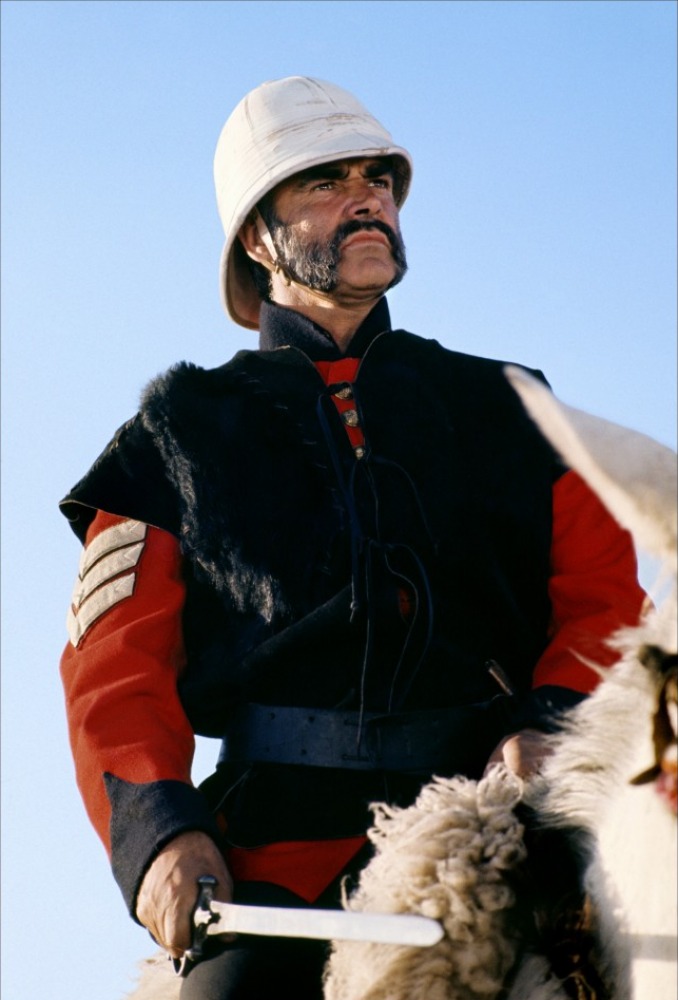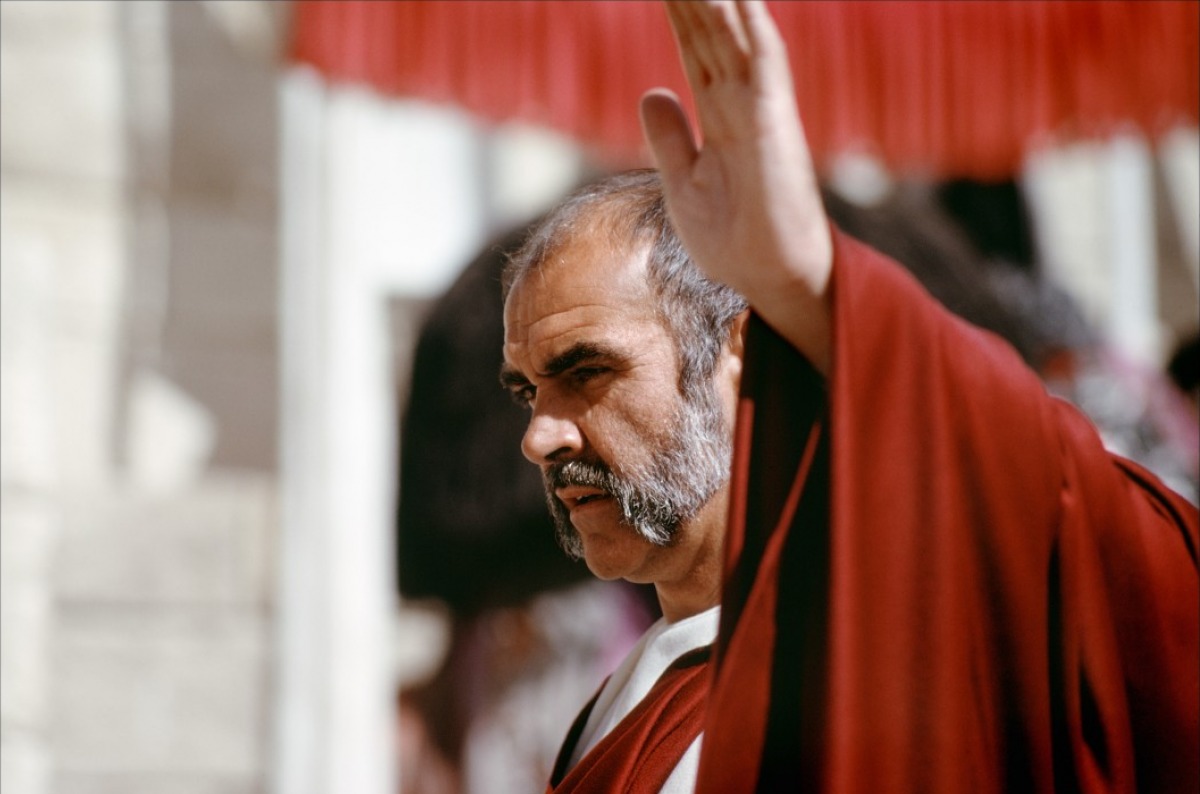The Man Who Would Be King
| Year | 1975 |
|---|---|
| Country | UK, USA |
| Tagline | Adventure in all its glory! |
| Director | John Huston |
| Cinematography | Oswald Morris |
| Scriptwriters | John HustonGladys HillRudyard Kipling |
| Produced | John ForemanWilliam Hill |
| Music | Maurice Jarre |
| Art Direction | Alexandre TraunerTony InglisEdith Head |
| Editing | Russell Lloyd |
| Genres | Adventure |
| Release Date | December 16, 1975 |
| MPAA | PG |
| Runtime | 123 min. |
Plot Summary
Did You Know?
The basis of the story of Rudyard Kipling's "the Man who would be king" became a true story, Josie of Harlan, the first American whose never set foot on the territory of Afghanistan. Born in Pennsylvania, an adventurer at heart garland in the early nineteenth century went to Afghanistan. The Emir of Kabul, Dost Mohammed Khan, noting the strategic talent of Harlan, made him commander in chief of all the Afghan army.
After the filming of "the Man who would be king" Sean Connery and Michael Caine were to receive 5% of the profits. Studio "allied Artists" cheated Connery and Caine underpaid them for 110 thousand dollars. They decided to bring a case against the Studio, despite the fact that in case of failure, they could lose an amount much greater than that required. It was a matter of principle, as stated by a proud Scotsman Sean. "Allied Artists" immediately released a statement in which he accused Caine and Connery in publishing discrediting company, false defamatory statements. In the subsequent war of words Connery was struck, telling the newspaper "new York times" about reigning in the Hollywood corruption. This was followed by the awarding of a claim from the "allied Artists" at $ 21 million for libel, in addition, both actors received a claim for $ 10 million for defaming a company.
On the set of Sean Connery independently performed a risky stunt: he made the fall from the rope bridge into the abyss. The scene was shot in a deep gorge, Sean flew about a hundred feet before he landed on a large pile of cardboard boxes. The episode was filmed several times, and each time had to fall deep into the abyss. In the documentary footage about the movie well see how Connery in one of the takes falls from a bridge into a rope chain, flying down 15 meters.
Carrum Ben Bouih was the caretaker of the olive garden, located near the scene of the shooting. He was invited to star in the film after a chance meeting with John Houston. After the hundred year old man several times fell asleep during the filming of the picture, it was found that it still works as a watchman, day starred in the film, and by night guarding the olive grove. Houston explained to him that Ben Bouih no longer needs his old job, as for shooting the movie, he will be well paid.
For 103-year-old Carrum Ben Bouih, who played the high priest Cafu-Selim, this role was the first and last in his life.
A few kilometers from Tanohata, an hour's drive from Marrakech, on one of the hills, the filmmakers built a fabulous Holy City of Sikandergul. In the end, for the filming was used by 30 different places in the surroundings of Marrakech and Ouarzazate.
Director John Houston and producer John shaped chosen for the filming of Morocco, since this country presents a huge number of different peoples and languages including Arabic, African, French and Berber. In addition, it was possible to remove various types, including deserts, plains, forests, hills, rural countryside with lush vegetation and mountains.
Christopher Plummer plays the role of Rudyard Kipling. Kipling, the hero of his own compositions, first appeared in the tape of George Stevens ' "Gunga DIN" (1939)
Creator of visual effects albert Witlock it only took six hours to paint the colors of the interiors of the fortress of Sikandergul.







